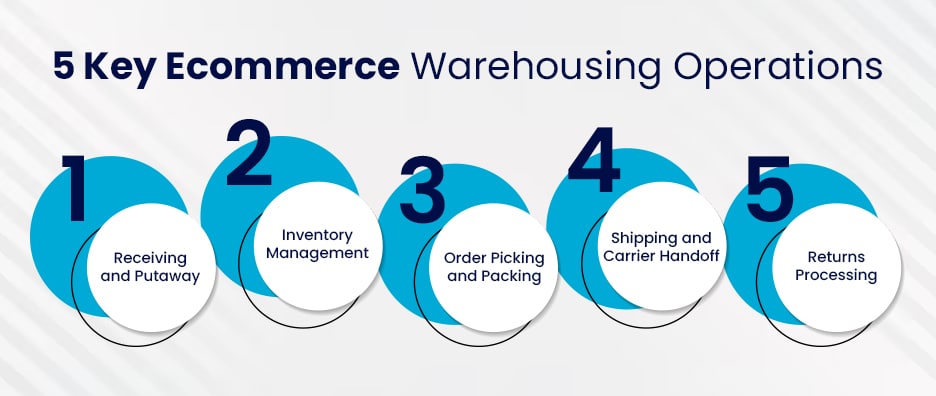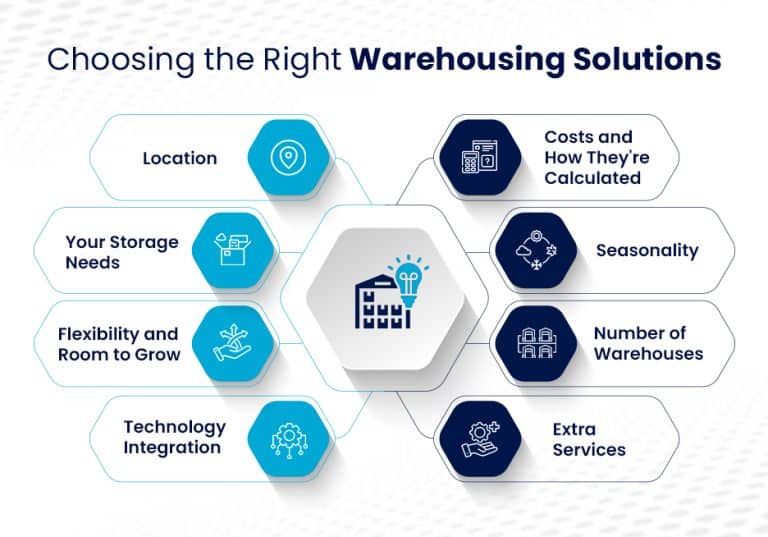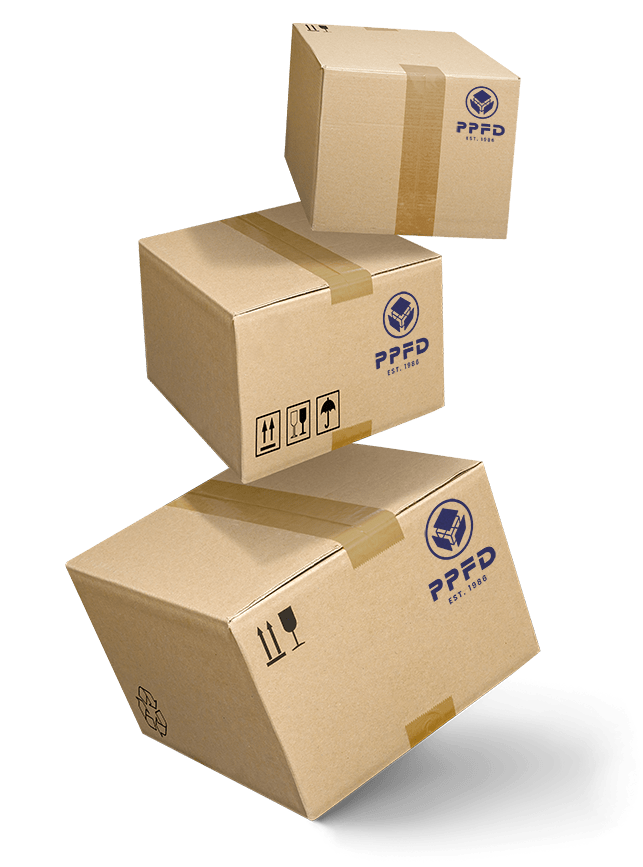
Warehousing may not sparkle like marketing or design, but in today’s world, it’s the quiet powerhouse behind successful businesses.
Whether you’re a small brand trying to keep up with rising e-commerce orders or a large company managing nationwide inventory, warehousing has evolved from being just “extra storage space” to a full-on strategic advantage.
With smarter tech, faster fulfillment expectations, and growing pressure on supply chains, today’s warehousing solutions aren’t about shelves and forklifts anymore, they’re about optimization, automation, and scalability.
So what’s changing? What should you be looking for? And how do you pick a solution that grows with you and beyond? This guide breaks it all down, simply, clearly, and in a way that actually helps.
The process where you store products before they are sold, shipped, or sent to a retail store is known as warehousing. For instance, you run a small business where you initially store your products at home or in your office.
But what when your orders grow? You will eventually need more space, and that is where warehousing comes in. A warehouse is not just a place to store, but a system that helps you know what you have, where it is, and how much of it is available at any time. The benefits ? smoother shipping process, no more overstocking or running out.
In the case of ecommerce, warehouses hold products until an online order comes in. Once it does, the item is picked, packed, and shipped directly to the customer. For retail stores, warehouses temporarily store inventory before it’s delivered to physical shop locations.
So, whether you’re selling online or in-store, warehousing is what keeps your products flowing and your customers happy.

Behind every smooth online order is a warehouse working hard in the background. For ecommerce brands, these five key warehousing operations help keep things running like clockwork, from storing inventory to handling returns.
This is where new stock enters the warehouse. Items are checked for damages, measured,weighed and photographed to make sure they’re correct and in good condition, then stored in the right place so they’re easy to find later.
Think of this as keeping an eye on all your stuff. It’s about knowing how much of each product you have, where it’s stored, and when you need to restock, so you’re never caught off guard.
When someone places an order, warehouse staff grab the right products (picking) and pack them securely for shipping. Getting this right means fewer mistakes and happier customers.
Once orders are packed, they’re labeled and sent off with the right delivery service. This step ensures your package gets where it needs to go, on time.
If a customer sends something back, the warehouse checks it, decides if it can be resold, and updates the inventory. Smooth returns = better customer trust.

Finding the right warehousing solution isn’t just about picking the biggest building with the lowest price. There are a bunch of important factors to think through, especially if you’re an ecommerce business trying to grow without breaking the bank.
Here’s what you should keep in mind:
Where your warehouse matters a lot. If it’s close to your customers or suppliers, shipping is faster and cheaper. If it’s near highways, ports, or airports, that’s even better for moving goods in and out. Also, make sure there’s a good local workforce to help with day-to-day operations.
Start by looking at how many products you have now—and how many you might have as your business grows. Do any of your items need special storage conditions, like staying cold or being handled gently? Also, if you sell lots of product variations (like shirts in different sizes, colours, and styles), you’ll need extra space to store each version separately. More variety usually means more space, and higher storage costs.
Your sales won’t always stay the same, some months will be busier than others, especially during holidays. So, it’s important to choose a warehouse that can handle both your quiet times and your busy seasons. Also, make sure you’re not stuck in a long, rigid contract. Look for a provider that lets you scale up or down when you need to, without charging extra fees or running out of space when you need it most.
A modern warehouse should come with smart tools. A good Warehouse Management System (WMS) helps you track inventory in real-time, reduce mistakes, and make sure orders are picked, packed, and shipped quickly. If you sell online, your warehouse software should also connect to your store and send out tracking info automatically.
Not all storage pricing works the same. Some warehouses charge by shelf, bin, or pallet. Others may charge per unit or per SKU. If you’ve got a small product line, you’ll pay less. But if you sell thousands of different items and don’t move them quickly, storage can get pricey.
Got busy seasons like Black Friday or Christmas? You need a solution that can handle spikes in volume without slowing you down. A flexible partner can help you scale up temporarily, without making you overpay during quiet months.
As you grow, you might need inventory in more than one place. Storing products closer to your customers helps reduce shipping time and cost. If you ship across Canada or internationally, using multiple warehouses could be a game-changer.
Need more than just storage and shipping? Look for value-add services like kitting, custom packaging, B2B fulfillment, or temperature-controlled storage. These can save you time and help deliver a better experience to your customers.
When it comes to warehousing solutions, one of the biggest decisions you’ll face is this:
Should you manage your own warehouse, or work with a third-party logistics (3PL) provider?
There’s no single right answer—it depends on where your business is right now, your budget, and your long-term goals. Here’s a breakdown to help you figure it out:
In-house: You’ll need to invest in space, staff, equipment, and technology. It’s a big commitment upfront, but it can make sense for large businesses with steady, high-volume orders.
Outsourced: You only pay for the storage and services you use—like shelf space, picking, packing, or returns. This setup is usually more cost-effective for growing brands.
Example: Companies like PPFD offer flexible pricing models, so you’re not locked into paying for space you don’t use. Perfect for businesses with seasonal sales or varying inventory levels.
In-house: You’re in charge of everything—layouts, workflows, staffing, inventory systems.
Outsourced: You hand over logistics to experts, but stay in the loop through tracking systems and regular updates.
Good to know: PPFD uses a custom Warehouse Management System (WMS) that gives you real-time inventory visibility and even integrates with Shopify, so you’re always informed without micromanaging.
In-house: Growth often means finding more space, hiring more staff, and dealing with more moving parts, all on your shoulders.
Outsourced: A 3PL like PPFD can scale with you. Whether you’re launching new products or need overflow space during a holiday rush, they have the flexibility to grow as you grow.
Want to learn how Shopify brands handle fulfillment with 3PLs? Read this guide by PPFD – The Complete Shopify Fulfillment Guide: Logistics Made Simple.
In-house: Warehousing takes time, attention, and a team. If your team is already juggling sales, marketing, and customer service, this might be tough to manage.
Outsourced: You offload the daily logistics so you can stay focused on growing your brand and keeping customers happy.
PPFD has been in the logistics business since 1986. Their team handles everything from receiving and storage to returns and value-added services like kitting—saving you time and stress.
Ask yourself:
If you’d rather avoid setup costs, staffing headaches, and storage uncertainty, outsourcing to a provider like PPFD could be your smartest move.
But if you’re scaling fast, have the resources to manage warehousing yourself, and need full control, building your own setup might be the way to go.
It might be tempting to pick the cheapest warehouse way out in the sticks, but that can backfire. Shipping costs go up, and customers wait longer for their orders. Instead, try to find a spot that’s closer to where most of your customers live or where your suppliers are. Sometimes, a few more dollars on rent saves a lot on shipping and keeps customers happy.
It’s easy to think your current storage will do for a while, but as you add more products or different sizes and colors, space fills up fast. Keep an eye on your inventory and plan ahead. Aim for some extra room (like 20-30% more) to handle busy seasons or sales spikes. That way, you won’t be scrambling for space later.
Using spreadsheets or paper to track inventory? That slows everything down and leads to mistakes. Even a simple Warehouse Management System (WMS) can make a huge difference. It keeps track of stock automatically, helps your team pick and pack orders right, and even connects to your online store so everything stays updated.
Returns can be a headache, but ignoring them only makes things worse. Without a plan, returned items pile up, inventory numbers get messed up, and customers get frustrated. Have a clear returns process from the start, set aside space, inspect returns quickly, and update your system. Happy returns mean happy customers who’ll keep coming back.
These are some of the most common pitfalls in warehousing solutions, but with a little planning, you can dodge them and keep your operation running smoothly as you grow.
Warehouse location affects shipping speed and costs. A warehouse near your main customers or suppliers reduces delivery times and transportation expenses, improving overall efficiency and customer satisfaction.
Absolutely. Small businesses can use warehousing solutions to scale efficiently without huge upfront costs by partnering with 3PL providers. This allows them to focus on growth while ensuring products are stored, picked, and shipped professionally.
Costs vary by provider and can be based on storage space (per shelf, bin, or pallet), number of SKUs, order volume, and additional services like picking or packing. Understanding these fees helps businesses choose the best fit without overspending.
Share :
get started
Our team is eager to partner with you and show why PPFD is the go-to choice for businesses aiming to streamline their logistics and distribution.
